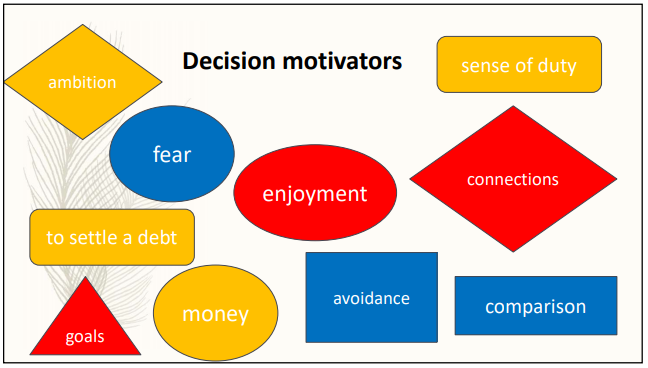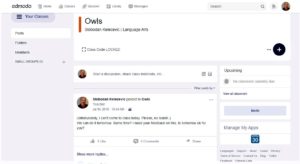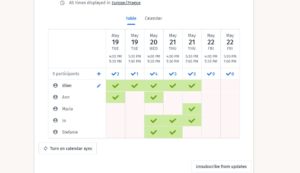Nail that Talk and Wow Your Audience! 8 Presentation Tips for ESL Trainers
Many ESL teachers and trainers give talks and presentations every now and then, and it’s a great way to practice public speaking skills. Find out how to provide the most value and inspire your audience by considering the following tips.
Speakers usually have very little time to deliver a message and leave a lasting impression. The attention span of their listeners is limited, and their talk is mostly just one of many that the audience will hear that day. So how can you make your delivery a memorable one – even if you don’t have tons of experience?
1. Choose your topic wisely
Ideally, pick a topic that is both relevant and close to your heart. Maybe there is already something inside you, just waiting to get out? For example, if you are passionate about the DOGME approach and want to make a case for relieving it from its shadowy existence in ELT, you have a specific topic and a clear message – two prerequisites for an interesting talk. Of course, you can choose something you don’t feel strongly about. It should just be of interest to you and match the occasion.
2. Make it educational and entertaining
Unlike lectures and symposia, workshops and conferences have a strong social component. People don’t just go there to learn something new, but also to meet other people and have a good time. Therefore, be professional, but in a pleasant way – humor and laughter are some of your biggest allies here.
3. Know your audience
Once you know when and where you are going to speak, try to get a rough idea of the audience:
- Who are they?
- What do they want?
- Why are they there?
The people you are going to speak to will be professionals with certain backgrounds and expectations. They will also have different motives for attending. In order to reach as many of them as possible, try to adjust your talk a little.
Here are four types of listeners you are likely to find among the audience:
- The ‘what’s in it for me?’ type. They attend your talk for a reason and they surely want to get something out of it. Whatever you tell them should be succinct and actionable.
- The no-nonsense type. They are interested in what you have to say, as long as you back it up with evidence. Sprinkle in a few numbers and statistics here and there for credibility.
- The warm and caring type. Unlike the first type, they love pleasant banter and light infotainment. To them, the feelgood factor matters just a tad more than the transfer of knowledge. They want to feel welcome and will respond best to charm.
- The proactive, playful type. They are in for a good time with friends – including lots of laughter and networking. They love an interactive element. You can slip in a game or videoclip to make them happy.
Granted, these are overgeneralizations. However, if you provide valuable information that is both actionable and factual in a lighthearted, playful manner,
Now it’s time to concentrate on yourself, your topic and your core message.
4. Structure your talk clearly
As you most probably know, writing helps you structure your thoughts, so it’s essential for a good talk. In the brainstorming phase, you can organise your ideas with the help of a mind map. (By the way, mind maps look like synapses and the brain seems to respond to that with heightened creativity.) Handwritten notes are better for your brain, as it takes longer to write than to type, so there is more reflection time involved.

Once you’ve gathered enough ideas, you can start weeding out what you don’t need and write an outline – the actual scaffolding of your talk.
One of the easiest ways to structure your presentation is the classical triad. It consists of an introductory statement or question which is followed by a string of arguments leading up to a final conclusion. The introductory statement/question should reflect your core message, for example:
“Should the DOGME approach celebrate a comeback in English teaching?”
This would be followed by your arguments in ascending order (the idea here being that the last point is generally the most memorable):
- first argument (weakest)
- second argument (stronger)
- third argument (strongest)
Illustrate each of your arguments with examples. You can use Powerpoint to enhance your presentation, but it’s best to make sure that you’re using brain-friendly slides, .
In order to strengthen your point, think of possible counterarguments and ways to deal with these. If your talk is of a more neutral, informative nature, you will have subitems instead of arguments. In any case, prepare yourself for possible questions and answers.
In the conclusion, sum up your findings and clarify in how far they support your initial statement (for an informative talk, just highlight the key points).
Moreover, pay special attention to the beginning and ending of your talk, because these are the most memorable parts of your talk. You can start with a funny anecdote, joke or witty quote and end with a punchy bottom line that sums up your message in a nutshell or a call to action, such as “Try to incorporate the DOGME approach using this simple five-minute-activity I’ve shown you”.
If you care deeply for the subject, it’s okay to make your presentation a little emotional – as long as your arguments are valid and rational.
5. Keep it relevant
Before you finish your outline, think about what you want your listeners to get out of your talk. Two or three gold nuggets of high-value information are way better than an overabundance of interesting points that afterwards will be forgotten. Crop out excess information in a final run-through to make it short and sweet.
6. Practice a good deal
While a good talk feels effortless and natural, it does so because of all the ‘invisible’ preparation that went in beforehand. Good speakers have practiced speaking diligently, and they usually have a roadmap in the background.
Thus, best make a few notes of the most important aspects – use bullet points for this and write like you would speak. Whenever you get a little lost, you’ll find what you need at a glance. Don’t memorise everything – it will sound rehearsed and awkward.
It’s best to rehearse in front of people or with a friend, but if you are alone, try recording yourself in order to evaluate your presentation afterwards:
- Was your speaking understandable?
- Was the message coherent?
- Were you nervous or relaxed while presenting?
Recording yourself may feel uncomfortable initially, but it will soon feel natural. Even a simple audio recording will help you hone your skills.
If you are nervous, try this: stand in a relaxed way and keep one of your nostrils shut with your index finger while gently breathing through the other one. Do this for about a minute to feel calm and at ease. You can also use this trick before your actual talk.
7. Treat yourself and forget
After days of practice, reward yourself with a day off before the big event. Taking your attention away from the presentation will help your subconscious connect the dots (you won’t learn much last-minute anyway).
Instead, take a walk in the forest, meet friends or just do something relaxing. If you can, go to sleep early and prepare everything you need the night before. The next day, you should feel refreshed and ready to rumble.
Don’t worry if you are still nervous before presenting – stage fright is normal for most people. If you have done your homework and practiced your talk thoroughly, your mental memory is likely to see you through.
8. Enjoy your talk
With the right preparation, your talk should be worthwile and fun for everyone, including yourself.
A few last tips: before you start, have someone else introduce you. Just like being introduced to your friend’s friend at a party, it creates instant trust and connection.
Try to stay relaxed and keep breathing throughout your talk. Generally, your listeners will be interested, well-meaning and friendly. If all goes well, you’re in for a big round of applause, so enjoy it as the reward you deserve for all your hard work and let the audience show you their appreciation. Afterwards, ask a colleague whose judgement you trust for feedback, so you can learn and do even better next time.
Good luck with your presentation!
***
For an example of a passionate talk regarding the societal dimension of ELT, check out Rob’s review of last year’s BESIG conference.
If you’d like to find out more about the non-verbal aspects of public speaking – such as body language – check out this workshop review with the best tips for “speechless rhetoric”.
















